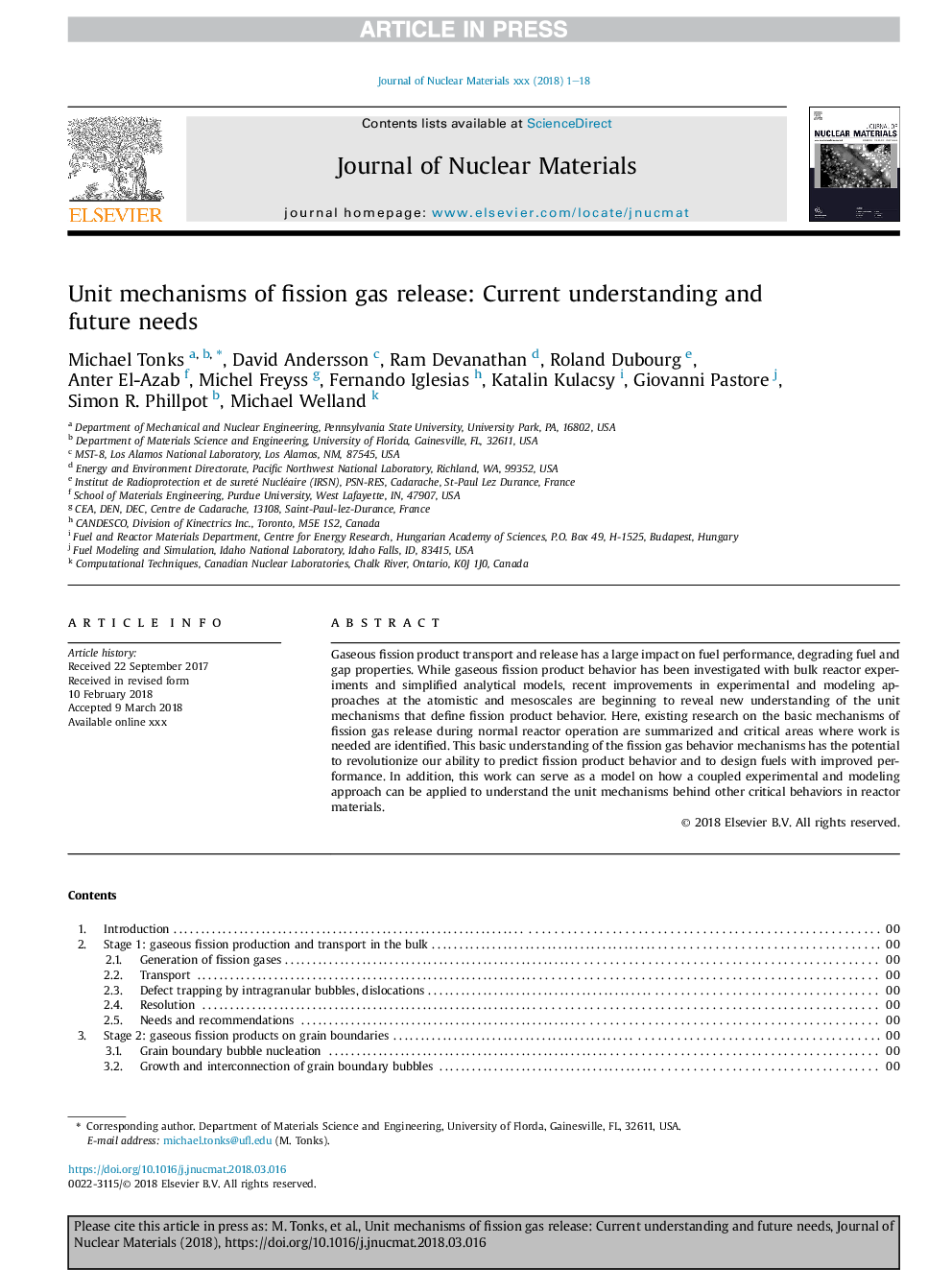| Article ID | Journal | Published Year | Pages | File Type |
|---|---|---|---|---|
| 7963191 | Journal of Nuclear Materials | 2018 | 18 Pages |
Abstract
Gaseous fission product transport and release has a large impact on fuel performance, degrading fuel and gap properties. While gaseous fission product behavior has been investigated with bulk reactor experiments and simplified analytical models, recent improvements in experimental and modeling approaches at the atomistic and mesoscales are beginning to reveal new understanding of the unit mechanisms that define fission product behavior. Here, existing research on the basic mechanisms of fission gas release during normal reactor operation are summarized and critical areas where work is needed are identified. This basic understanding of the fission gas behavior mechanisms has the potential to revolutionize our ability to predict fission product behavior and to design fuels with improved performance. In addition, this work can serve as a model on how a coupled experimental and modeling approach can be applied to understand the unit mechanisms behind other critical behaviors in reactor materials.
Related Topics
Physical Sciences and Engineering
Energy
Nuclear Energy and Engineering
Authors
Michael Tonks, David Andersson, Ram Devanathan, Roland Dubourg, Anter El-Azab, Michel Freyss, Fernando Iglesias, Katalin Kulacsy, Giovanni Pastore, Simon R. Phillpot, Michael Welland,
